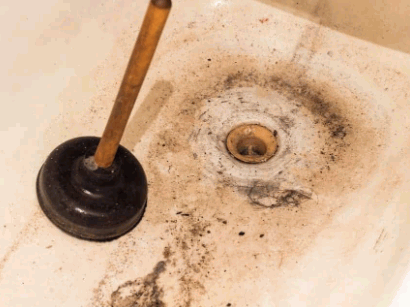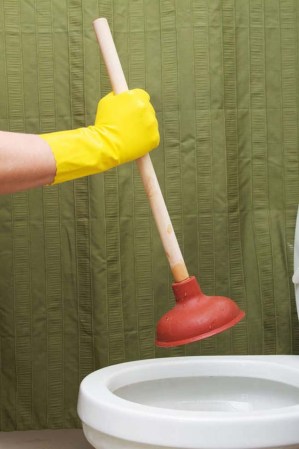This post in the next paragraphs about Tips on How to Effectively Use a Plunger is really engaging. Read it for your own benefit and see what you think about it.

Intro
Appropriate maintenance of household drains pipes is crucial for stopping blockages and guaranteeing smooth water circulation. One of the secret tools in every property owner's toolkit is the bettor, along with different drainpipe cleansers designed to tackle persistent obstructions effectively. This post checks out exactly how to make use of bettors and drainpipe cleansers successfully to maintain your drains streaming freely.
Section 1: Comprehending Plungers
Types of Plungers
There are several sorts of bettors offered, each developed for different sorts of drains pipes and clogs. The most usual types consist of mug plungers, flange bettors, and accordion bettors.
How Plungers Job
Plungers work on the concept of creating stress and suction to dislodge obstructions. When appropriately used over a drainpipe, they develop a vacuum cleaner that can take out particles or separate obstructions.
Selecting the Right Plunger
Choosing the best plunger depends on the type of drainpipe and the nature of the obstruction. Mug plungers are optimal for sinks and tubs, while flange plungers are much better matched for bathrooms due to their design.
Usual Blunders with Bettors
Preventing these errors ensures effective plunging: incorrect seal around the drain, inadequate force, and unclear bordering particles.
Area 2: Using Plungers Effectively
Preparation
Prior to plunging, make sure the plunger covers the drain completely and creates a limited seal. Clear any type of visible debris around the drainpipe opening.
Method
Start with gentle diving movements to build suction. Rise pressure gradually, making use of a consistent rhythm. Repeat as necessary till the drain gets rid of.
Fixing Tips
If diving does not function, try adjusting the seal, using petroleum jelly for a far better seal, or making use of a various type of plunger.
Section 3: Understanding Drain Cleaners
Types of Drain Cleaners
Drain cleaners can be chemical or enzymatic. Chemical cleaners use solid chemicals to liquify obstructions, while chemical cleaners utilize all-natural enzymes to break down raw material.
Exactly How Drain Cleaners Work
Chemical cleaners respond with blockages to dissolve them, while enzymatic cleaners break down natural products like hair and grease without harming pipelines.
Safety Factors to consider
Constantly put on handwear covers and eye security when using chemical drainpipe cleaners. Guarantee sufficient air flow and follow producer guidelines meticulously.
Eco-Friendly Alternatives
Consider making use of vinegar and baking soft drink or enzyme-based cleaners for environmentally friendly alternatives that are much safer for pipes and the setting.
Section 4: Making Use Of Drainpipe Cleaning Company Successfully
Application Methods
Pour chemical cleaners straight right into the drain opening. Allow them to work for the advised time prior to purging with hot water. Enzymatic cleansers ought to sit over night.
Safety measures
Avoid blending different sorts of cleaners, as this can generate hazardous fumes. Never use chemical cleansers along with a bettor, as splashing can take place.
Dealing With Persistent Blockages
For persistent blockages, consider utilizing a pipes snake or calling an expert plumber to avoid damages to pipelines.
Conclusion
To conclude, recognizing just how to use plungers and drainpipe cleansers properly is vital for keeping healthy and balanced pipes systems. By choosing the right tools and strategies, homeowners can tackle minor obstructions and stop major pipes issues down the line.
How To Properly Use A Plumbing Snake To Clear Drains
When any drain clogs in our home arise, we tend to gravitate toward the plunger and little else. In cases where the plunger and its vacuum-created pressure are not able to clear clogs, many immediately move to harmful chemicals or simply call their plumber to fix the issue.
we’re happy to help with all drain cleaning needs and concerns. This includes informing you on a few other home remedies you may have at your disposal for minor to moderate clogs, one of which is the use of a plumbing snake. Many people have never used one of these before – let’s go over the steps to take when your drain clogs and you have a plumbing snake available.
Attempt Plunger Use
The first step here, as we noted above, should indeed be to grab your plunger when you notice a drain clog and attempt to resolve it this way. If you’re unsure how to use a particular type of plunger, our plumbers can answer any questions you have. If this doesn’t do the trick, however, you move on to the snake.
Locate And Prepare Snake
A plumbing snake is a metal or plastic device that’s generally about a quarter of an inch thick. It’s design with significant extensions, meant to reach down into your clogged drain and push the clog out. Snakes also contain drain augers that will latch onto and push stubborn blockages.
If your plunger doesn’t clear a clog, locate your snake and bring it to the drain in question. We also recommend keeping a bucket nearby to collect the clog once you pull it out, plus we’d advise wearing goggles and possibly protective gloves.
Feed Snake
Once you’re ready to go, feed the snake slowly down the drain, using the crank device it comes with to keep it moving until it finds the clog. Once this happens, much of the clog will be latched onto the coil so you can pull it out, while the rest will simply break up and flow downward.
Detach Debris
Remove the snake slowly from the drain, and once you’ve done so, pick off any debris that’s stuck to the coil. This is another area where wearing gloves is a must.
Flush Drain
Finally, take a few minutes to ensure the snake has done its job correctly. If you’ve been using it on a toilet, flush the toilet a couple times and make sure everything flows well. If you’ve used it on a different drain, flush it with some room temperature water.
https://www.mybuddytheplumber.com/blog/how-to-properly-use-a-plumbing-snake-to-clear-drains/

Application Methods
Pour chemical cleaners straight right into the drain opening. Allow them to work for the advised time prior to purging with hot water. Enzymatic cleansers ought to sit over night.
Safety measures
Avoid blending different sorts of cleaners, as this can generate hazardous fumes. Never use chemical cleansers along with a bettor, as splashing can take place.
Dealing With Persistent Blockages
For persistent blockages, consider utilizing a pipes snake or calling an expert plumber to avoid damages to pipelines.
Conclusion
To conclude, recognizing just how to use plungers and drainpipe cleansers properly is vital for keeping healthy and balanced pipes systems. By choosing the right tools and strategies, homeowners can tackle minor obstructions and stop major pipes issues down the line.
How To Properly Use A Plumbing Snake To Clear Drains
When any drain clogs in our home arise, we tend to gravitate toward the plunger and little else. In cases where the plunger and its vacuum-created pressure are not able to clear clogs, many immediately move to harmful chemicals or simply call their plumber to fix the issue.
we’re happy to help with all drain cleaning needs and concerns. This includes informing you on a few other home remedies you may have at your disposal for minor to moderate clogs, one of which is the use of a plumbing snake. Many people have never used one of these before – let’s go over the steps to take when your drain clogs and you have a plumbing snake available.
Attempt Plunger Use
The first step here, as we noted above, should indeed be to grab your plunger when you notice a drain clog and attempt to resolve it this way. If you’re unsure how to use a particular type of plunger, our plumbers can answer any questions you have. If this doesn’t do the trick, however, you move on to the snake.
Locate And Prepare Snake
A plumbing snake is a metal or plastic device that’s generally about a quarter of an inch thick. It’s design with significant extensions, meant to reach down into your clogged drain and push the clog out. Snakes also contain drain augers that will latch onto and push stubborn blockages.
If your plunger doesn’t clear a clog, locate your snake and bring it to the drain in question. We also recommend keeping a bucket nearby to collect the clog once you pull it out, plus we’d advise wearing goggles and possibly protective gloves.
Feed Snake
Once you’re ready to go, feed the snake slowly down the drain, using the crank device it comes with to keep it moving until it finds the clog. Once this happens, much of the clog will be latched onto the coil so you can pull it out, while the rest will simply break up and flow downward.
Detach Debris
Remove the snake slowly from the drain, and once you’ve done so, pick off any debris that’s stuck to the coil. This is another area where wearing gloves is a must.
Flush Drain
Finally, take a few minutes to ensure the snake has done its job correctly. If you’ve been using it on a toilet, flush the toilet a couple times and make sure everything flows well. If you’ve used it on a different drain, flush it with some room temperature water.
https://www.mybuddytheplumber.com/blog/how-to-properly-use-a-plumbing-snake-to-clear-drains/

I hope you enjoyed our part about A Guide to Plungers (and How to Use Them). Thanks so much for taking time to read our article. Enjoyed reading our blog entry? Please share it. Help others check it out. Thanks for your time. Revisit us soon.
Visit My Website